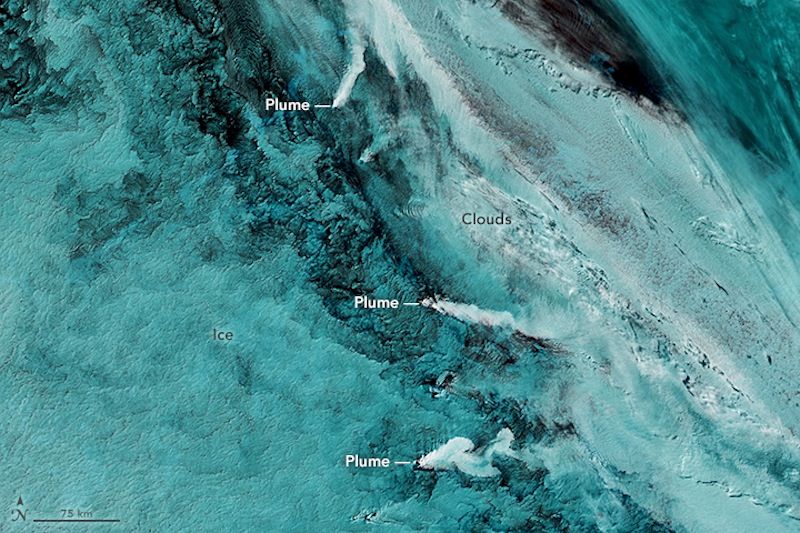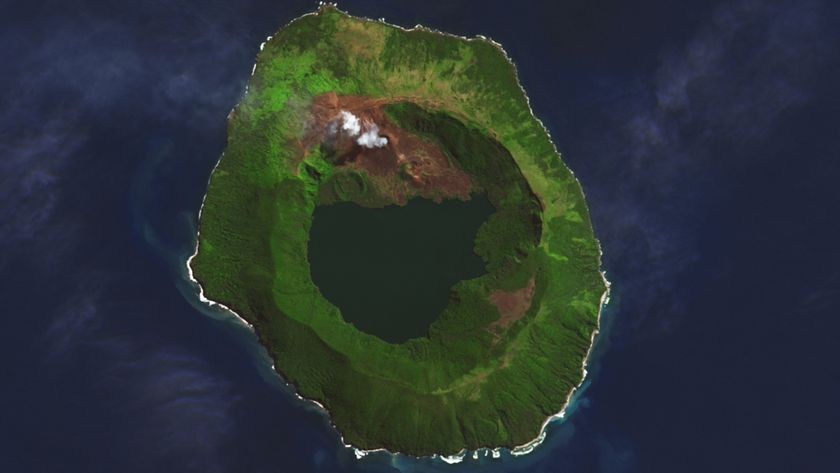Boom Times 3: Volcano Triplets Spotted Erupting (Photo)

Three active volcanoes simultaneously erupting and unleashing giant plumes of smoke were spotted by a NASA satellite as it passed over a remote archipelago in the South Atlantic Ocean.
The three stratovolcanoes — a type of composite volcano built of layers of lava, ash and stone — are located on the South Sandwich Islands, which are about 1,700 miles (2,800 kilometers) southeast of Buenos Aires, Argentina. Volcanoes in the region are some of the least studied in the world, because of the remote location and inhospitable environment of the islands.
On Sept. 29, NASA's Aqua satellite captured the plumes from these volcano triplets in a false-color image. Clouds and ice in the region make it difficult for satellites to see volcanic activity in natural-color imagery, NASA said. False-color images use portions of the electromagnetic spectrum typically invisible to humans — such as infrared — to distinguish ice from ash and clouds, according to the agency.
Volcanic eruptions in remote, uninhabited places like the South Atlantic would likely go unnoticed without satellites and seismic monitoring, according to NASA. But the agency said these technological advances have given scientists new insights into volcanic activity around the world.
In fact, when the 3,600-foot-tall (1,100 meters) Mount Sourabaya erupted earlier this year, for the first time in 60 years, not a single human soul saw the eruptions live. Instead, it was NASA satellites that captured images of the eruption on Bristol Island, one of the largest islands in the South Sandwich Islands chain.
"Today, scientists can pick up signatures of events occurring far from any human observers," NASA officials said in a statement about the Mount Sourabaya eruption.
Original article on Live Science.
Sign up for the Live Science daily newsletter now
Get the world’s most fascinating discoveries delivered straight to your inbox.












